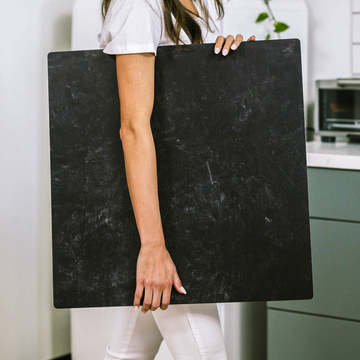Scroll Amazon for food photography backdrops and you'll spot endless options-faux marble, rustic wood, trendy slates, and more. If you read blogs or watch YouTube reviews, most of the advice starts and ends at how "pretty," "durable," or "affordable" a backdrop is. But here’s the truth: the way a backdrop truly affects your photos reaches far beyond its surface pattern or price tag.
In reality, your backdrop is more than a background-it’s an active participant in every single shot you take. So, let’s dig into the lesser-known science behind Amazon backdrops and find out how to choose one that will make your food photos look pro instead of amateur.
The Color Problem: When “Realistic” Prints Betray Your Food
It’s easy to grab a cheap “marble” or “wood” print and get started. But under your strobes or softboxes, not all backdrops are created equal. Here’s why:
- Glossy Surfaces Spell Trouble: Many affordable Amazon boards come with a shiny coating. It might look snazzy out of the box, but the glossy finish can bounce harsh reflections back into your scene, leading to odd white hotspots and colored streaks across your carefully plated dish.
- Color Casts Lurk Beneath the Surface: The inks used in budget printing often reflect strange hues under bright lighting. You may notice your creamy sauces appearing yellow or your greens turning blue-a classic sign that your backdrop is meddling with your color accuracy. This is a nightmare in post-processing, wasting your time and patience.
Try This: Place a neutral gray card on your backdrop, shoot under your usual lighting, and check the color in your editing software. Any tint? That’s your backdrop feeding color into your photos!
Texture Tells the Truth: Micro-Details Matter
In food photography, subtle details set your images apart. What you may not realize is that the micro-texture of a surface can make or break believability.
- Smooth, But Flat: Some “matte” backdrops are perfectly smooth, despite being printed with a so-called realistic pattern. When you zoom in, there’s no genuine depth-no little shadows, no tactile texture-making your scene look obviously fake to a discerning viewer.
- Texture Equals Depth: Real stone and wood have unpredictable, organic shadowing. That textural depth is what tricks the eye and lends your photos a sense of authenticity, even at wide apertures where subtle bokeh helps your food pop.
Pattern Scale: The Optical Illusion Most Creators Overlook
Have you ever noticed that some boards look strangely out of proportion? That’s pattern scale, and it can silently undermine your shoot:
- Unnatural Proportions: If the planks, grain, or marble veins run too wide-or too small-compared to the plate sizes in your shot, it throws the illusion and makes your surface obviously artificial.
- Lens Distortion: Close-up shots or certain focal lengths will exaggerate the faux pattern’s scale, especially near the edges, leading to distorting effects that scream “printed prop” instead of “real scene.”
Tip: Before you buy, ask for a sample image showing something common, like a fork or slice of bread, on the backdrop. If the print looks out of scale next to real food, keep searching.
Durability and Cleaning: The Real-World Test
Most listings boast about being “waterproof” or “easy to clean,” but there’s more beneath the marketing slogans:
- Staining Surprises: Sauce and oil can soak into the surface or disrupt the print, especially with low-cost boards. Some inks even smudge or run if you wipe them with anything stronger than a wet towel.
- Long-Term Issues: Acidic substances or harsh cleaners can leave chemical burns or discolor the board, and you might not notice right away. If you shoot messy food often, durability becomes more than just a convenience-it's a must.
Quick Test: Dab a bit of oil or tomato sauce on a hidden corner before your first shoot. Wipe, wait, and check for stains-that’s how you’ll know if your board will hold up in real life.
How to Hack Your Backdrop: Turning Mediocre Boards into Pro Tools
Think you’re stuck with what ships in the box? Think again. Here are a few ways to customize a generic Amazon backdrop for top-tier results:
- Add a True Matte Finish: Apply a spray of high-quality matte varnish to eliminate pesky glare and protect the printed surface, making even a cheap board behave like a studio-grade prop.
- Create Real Texture: Lightly brush on a layer of clear acrylic gel medium for tactile dimension that fools the camera and the viewer alike.
- Break Up Fake Patterns: Overlay small real elements, like crumbs, cloth napkins, or slivers of wood, to disguise repeated or unrealistic patterns and enhance believability.
The Bottom Line: Don’t Just Pick Pretty-Pick Smart
An Amazon food photography backdrop is more than a background; it’s your lighting partner and a silent collaborator in every shot. When you know what to look for, you can avoid the pitfalls and get results that stand out-online, in print, or wherever your images appear.
If you’ve run into strange color shifts, shiny hotspots, or stains that never come out, share your story below. Let’s trade tips and turn our collective experience into a resource that helps everyone up their food photography game!



